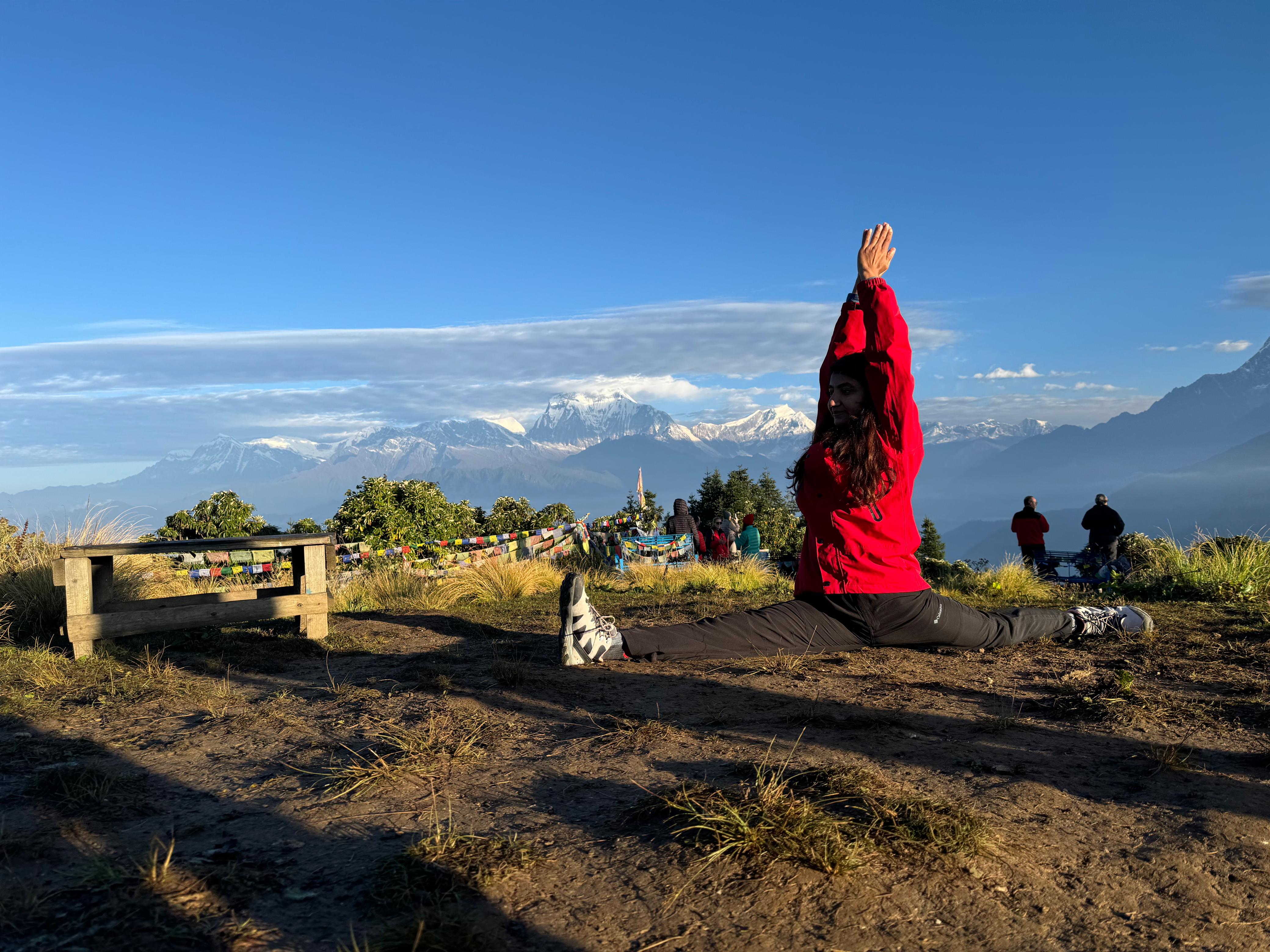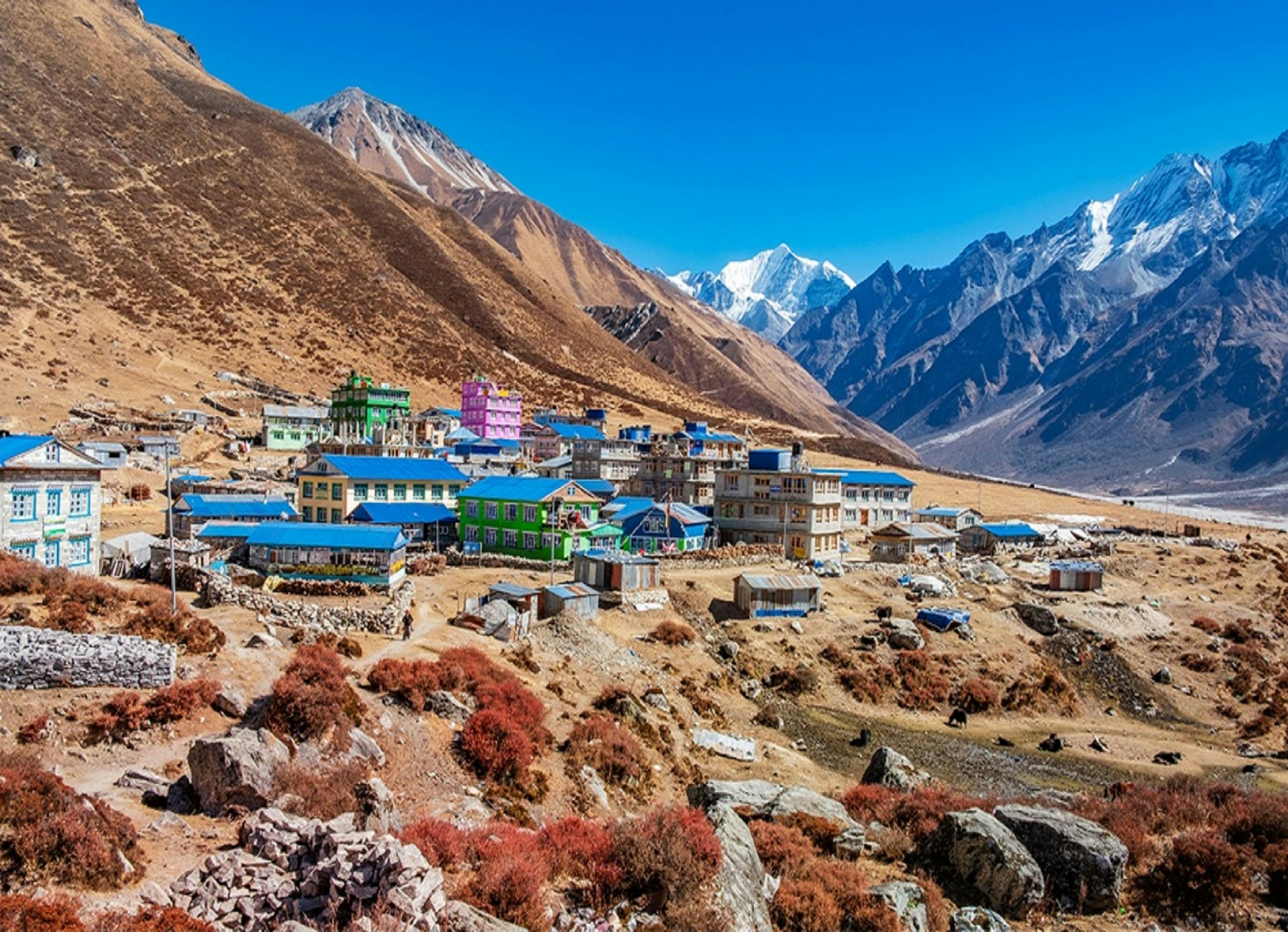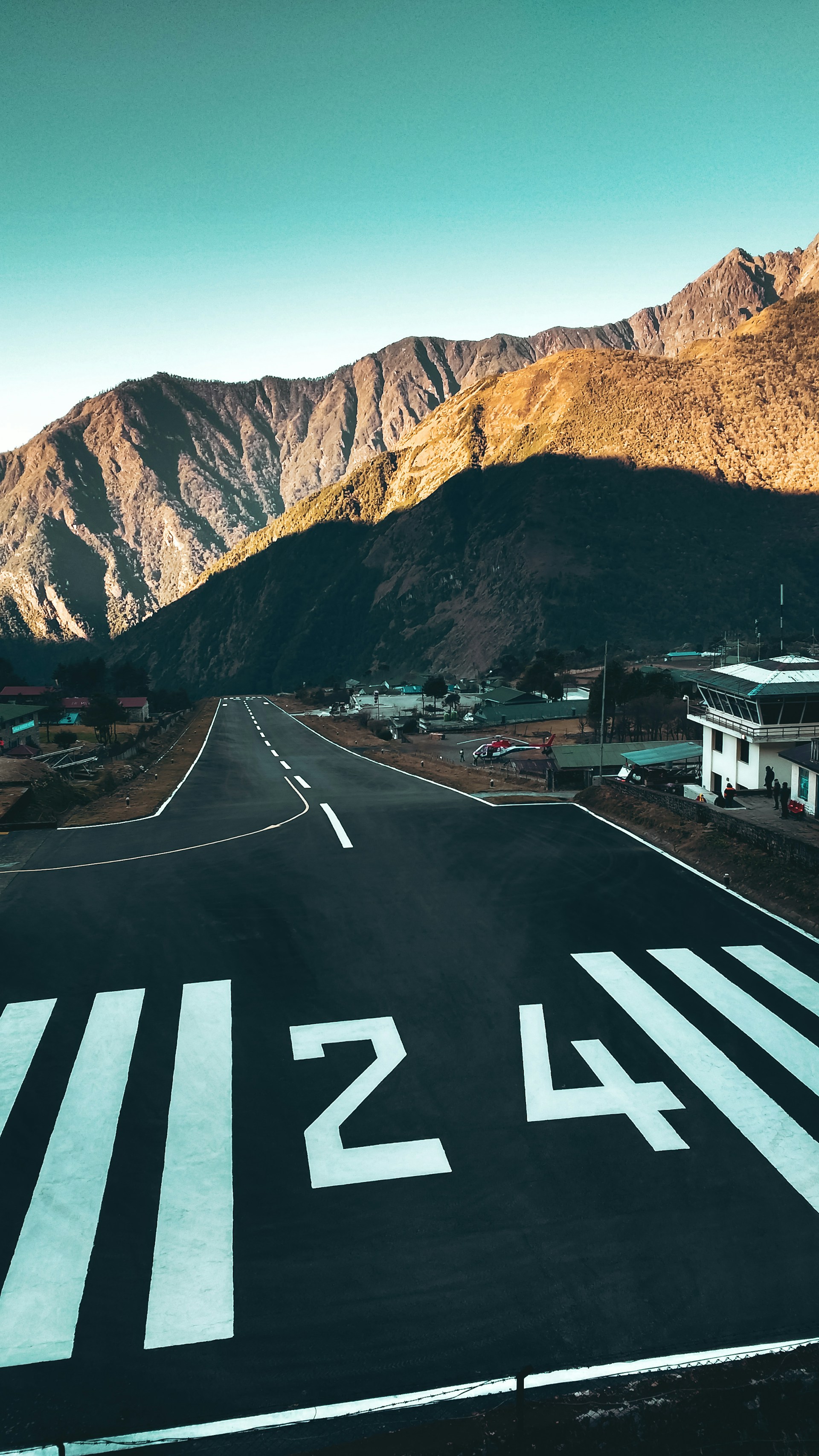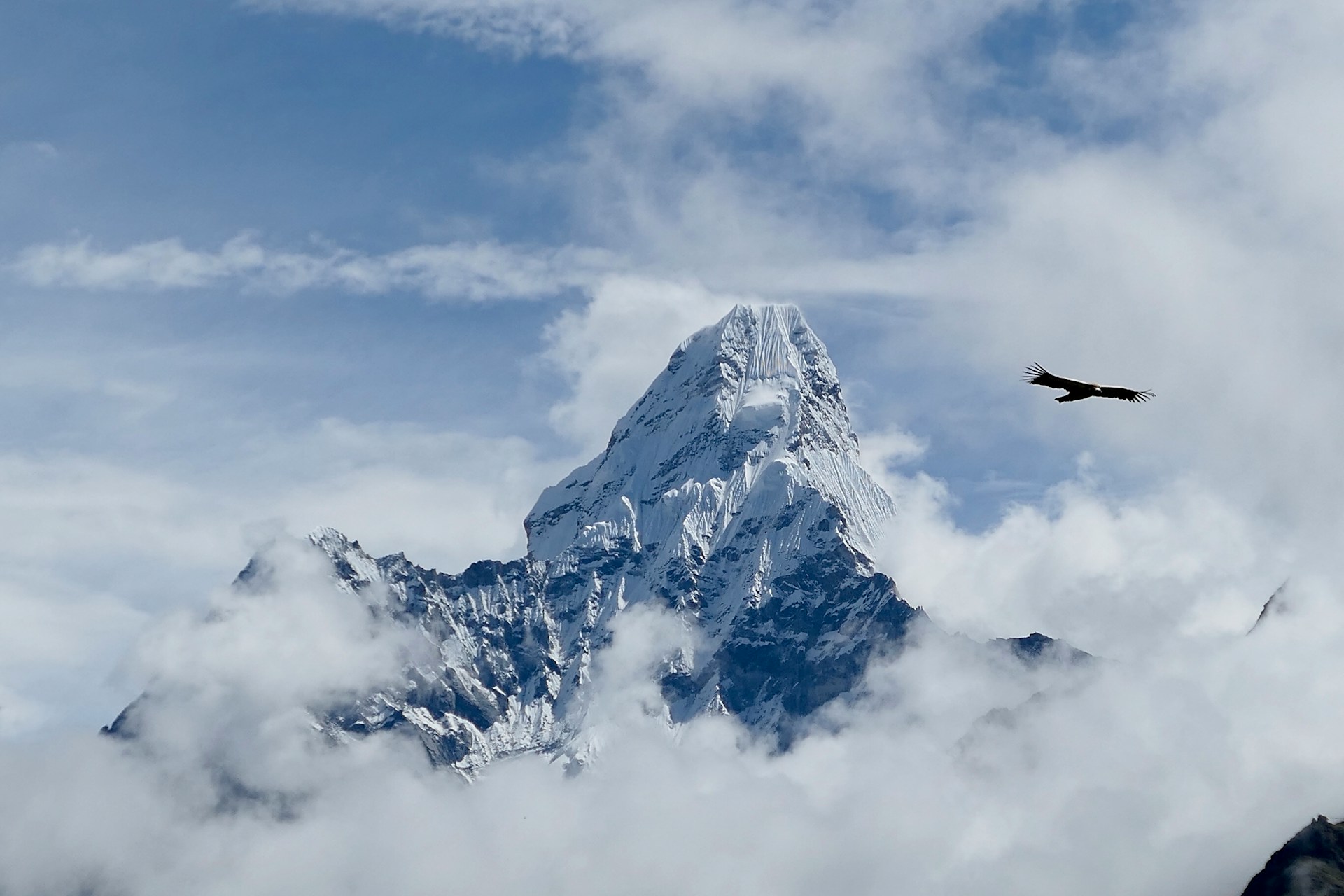Jhinu Danda: A Hidden Gem in the Annapurna Region
Jhinodanda, also known as Jhinu Danda, is a charming village situated at 1,760 meters (5,774 feet) in Nepal’s spectacular Annapurna region. Known for its natural beauty and cultural richness, Jhinu Danda offers trekkers a perfect blend of relaxation and adventure.
Famed for its natural hot springs near the banks of the Modi Khola River, Jhinu Danda offers trekkers the rare chance to soak in warm, healing waters surrounded by lush forest and Himalayan views. After days on rugged trails, it's the perfect place to relax, recharge, and connect with nature.
Jhinu Danda is known for its welcoming teahouses, local hospitality, and rich Gurung culture. Whether you’re trekking the Annapurna Base Camp (ABC) route or exploring nearby villages like Chhomrong, this tranquil village provides the ideal balance of adventure and peaceful escape.
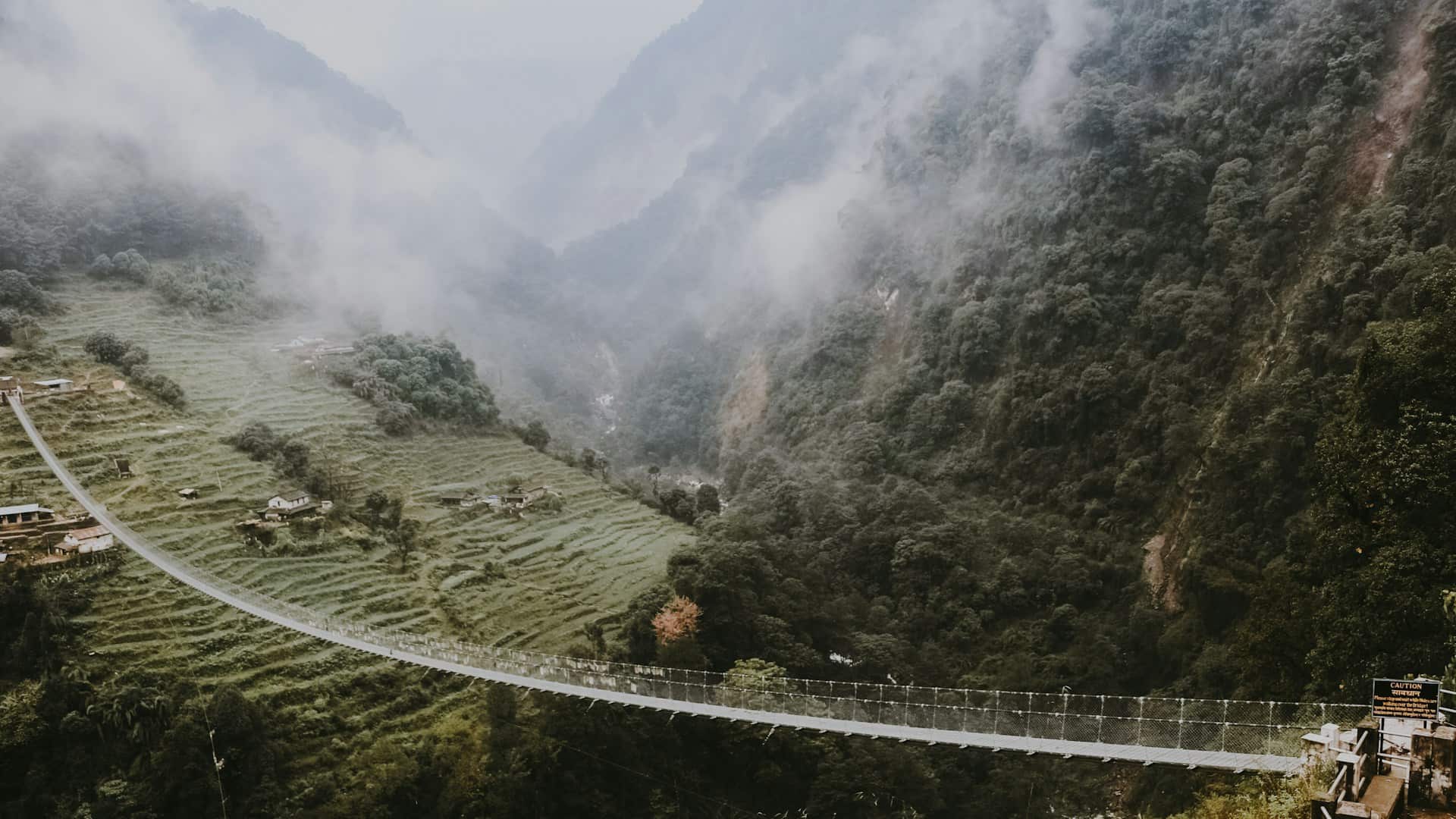
Relax by the scenic long pool at Jhinu Danda, a tranquil oasis surrounded by lush greenery and serene Himalayan landscapes.
Location and Geography
Nestled on a hillside, Jhinu Danda is strategically located along the popular Annapurna Base Camp trek. The village overlooks the Modi Khola River and offers breathtaking views of the surrounding Himalayan peaks, including Machapuchare (Fishtail). The village is famous for its hot springs, which are about a 20-minute walk down from Jhinu Danda along the riverbank. The trail to the hot springs passes through lush rhododendron forests, providing a scenic and soothing journey. However, note that the hot springs are closed during the monsoon season from June to July. Many trekkers coming from Landruk make a stop at Jhinu Danda for a refreshing break and a meal.
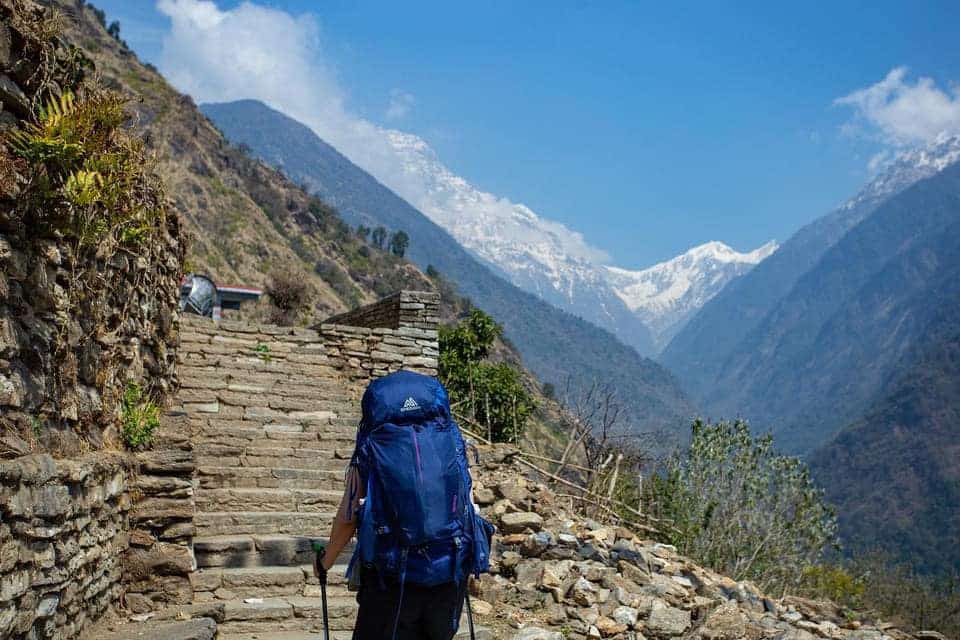
Explore the scenic trails of Jhinu Danda, a trekker’s paradise with breathtaking landscapes, serene hot springs, and unforgettable views of the Annapurna region.
Importance in Trekking
Jhinu Danda is a key stop for those trekking to Annapurna Base Camp. It serves as a great place to relax and enjoy the hot springs, which are known for their therapeutic benefits. After several days of trekking, the hot springs offer a wonderful opportunity to unwind and ease sore muscles. From Jhinodanda, trekkers can also enjoy stunning views of prominent mountains like Annapurna South, Machapuchare, Annapurna II, and Dhaulagiri.
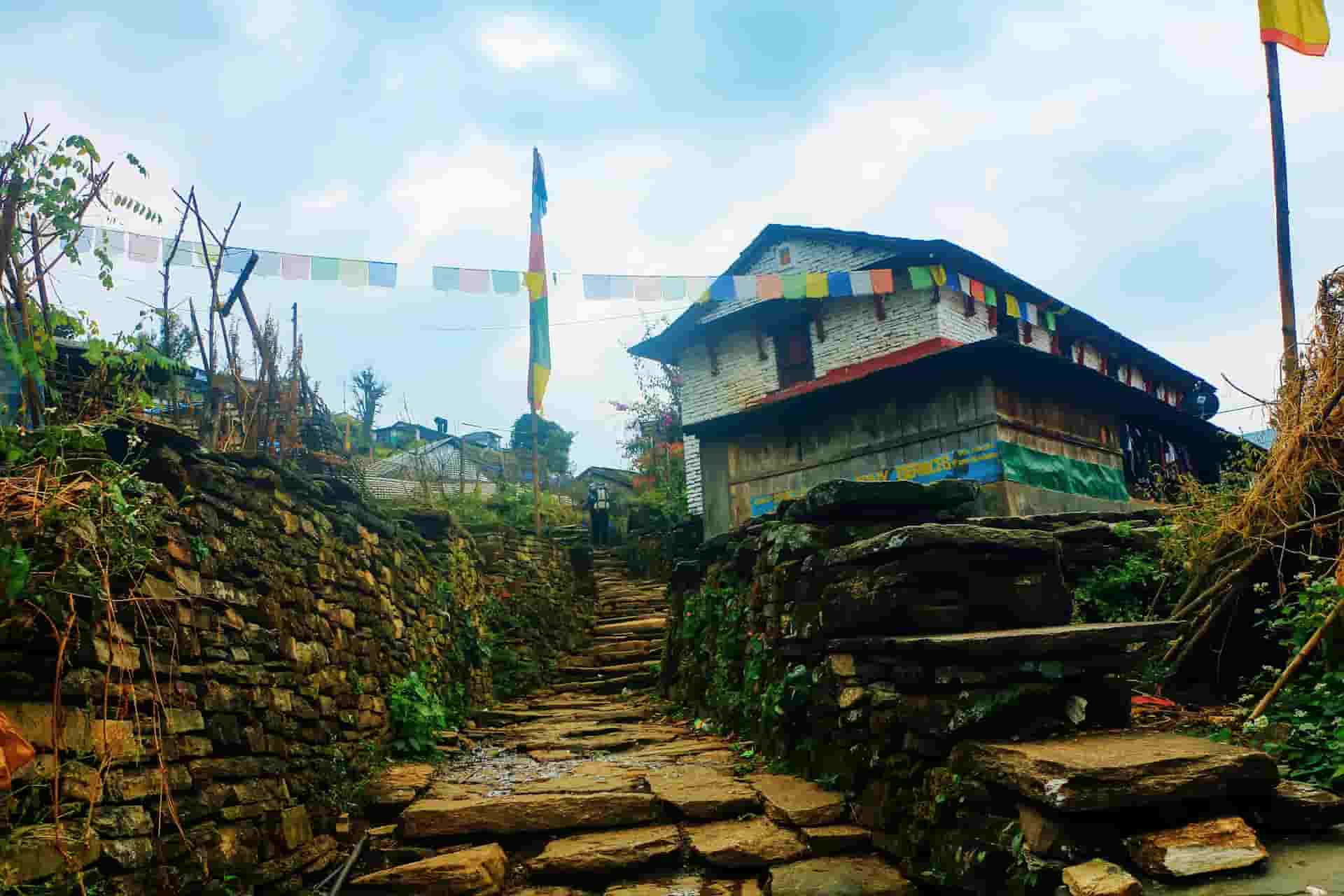
Discover the timeless charm of traditional Nepali architecture in Jhinu Danda, where rustic beauty meets serene Himalayan landscapes.
Permits Required for Visiting Jhinu Danda
Annapurna Conservation Area Permit (ACAP)
This permit is essential for entering the Annapurna Conservation Area. It can be obtained from the Nepal Tourism Board office in Kathmandu or at entry points along the trek. The cost is NPR 1,000 for SAARC nationals (excluding Nepalis) and NPR 3,000 for other foreign nationals.
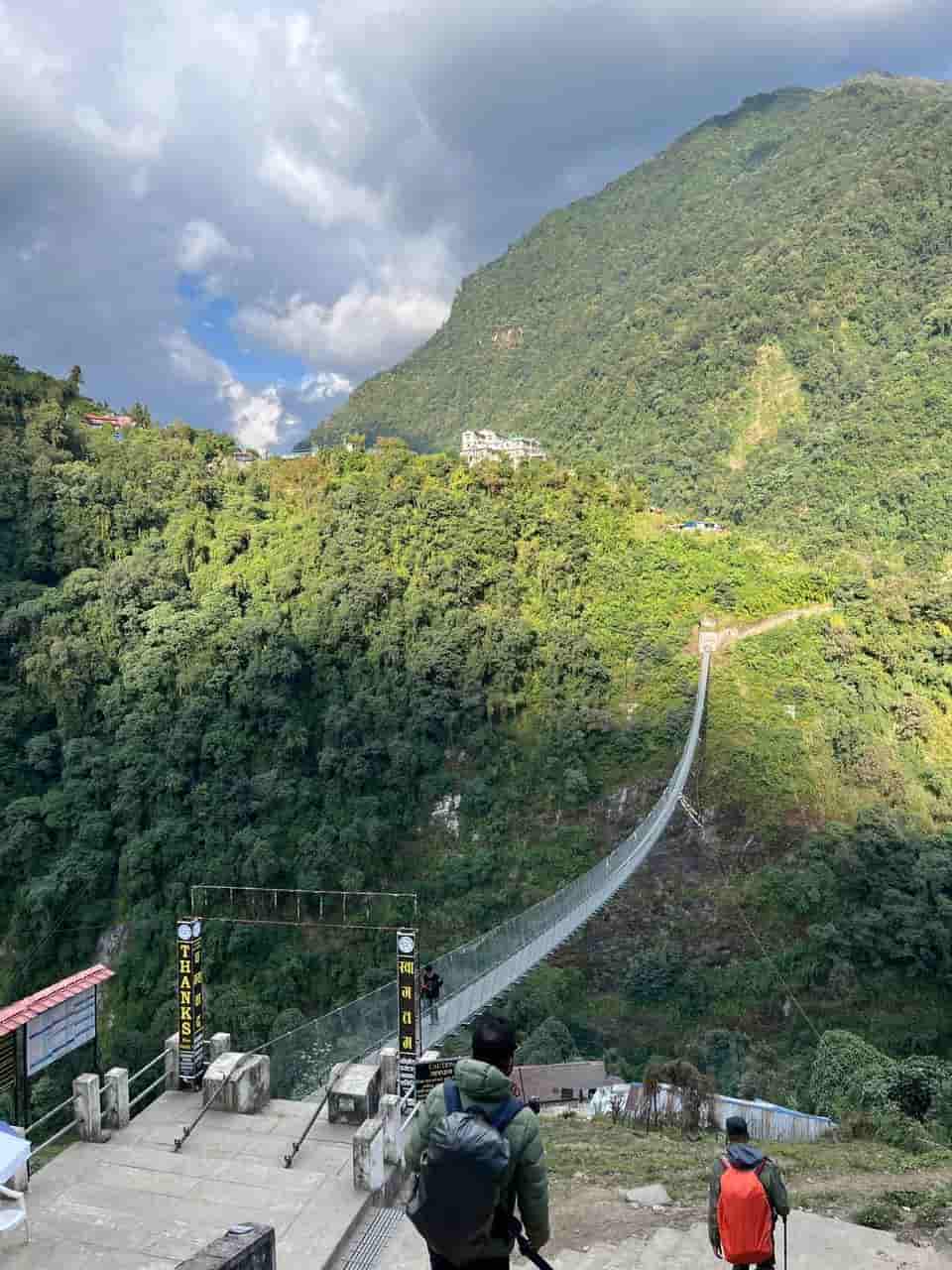
Experience the beauty of Jhinu Danda on a scenic trek through the Annapurna region, blending lush landscapes and serene mountain views.
Trekkers Information Management System (TIMS) Card
This card is required for all trekkers in Nepal. It can be acquired from the Nepal Tourism Board office or TIMS checkposts in Pokhara. The fee is NPR 1,000 for SAARC nationals (excluding Nepalis) and NPR 2,000 for others.
Best Time to Visit Jhinu Danda
The best times to visit Jhinu Danda are during spring (March to May) and autumn (September to November). In autumn, Jhinu Danda enjoys perfect trekking weather. The skies are clear, and temperatures are mild, ideal for outdoor activities. The hills around the village burst with vibrant colors from blooming wildflowers, while the majestic mountains stand out against the clear blue sky. Autumn is also a great time to experience local festivals like Dashain and Tihar, where you can see traditional dances, rituals, and ceremonies.
In spring, the area transforms with the blooming of colorful rhododendrons, making it a beautiful time for trekking and nature walks. The weather is pleasantly mild with warm days and cool evenings, offering comfortable conditions for exploring the natural beauty of Jhinu Danda.
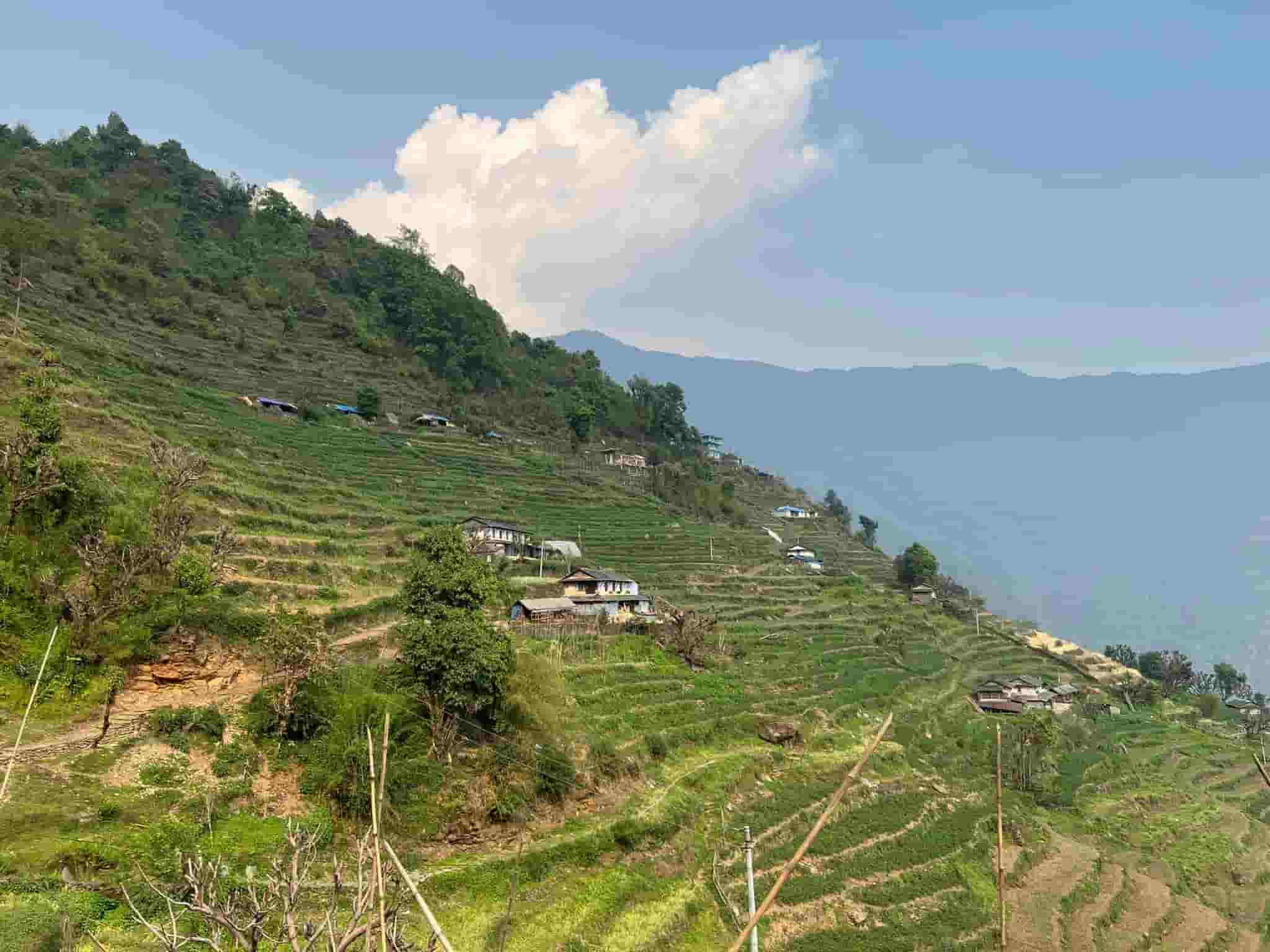
Discover the traditional Nepali charm of Jhinu Danda, where heritage and natural beauty create a captivating glimpse into local culture.
Exploring Jhinu Danda
Jhinu Danda offers more than just its famous hot springs. Adventurers can explore nearby hiking trails that reveal stunning views of the landscape and charming villages. These trails provide both physical challenge and a chance to deeply connect with nature.
Visitors to Jhinu Danda also have the opportunity to experience the vibrant culture of the local Gurung community. You can learn about their traditions, take part in cultural events, and watch traditional dances and rituals that have been passed down through generations.
For those who love photography, Jhinu Danda is a treasure trove of scenic beauty. From the terraced fields and lush forests to the majestic mountain views, every corner offers a perfect shot. Jhinu Danda is an excellent place to capture the stunning natural beauty of Nepal.
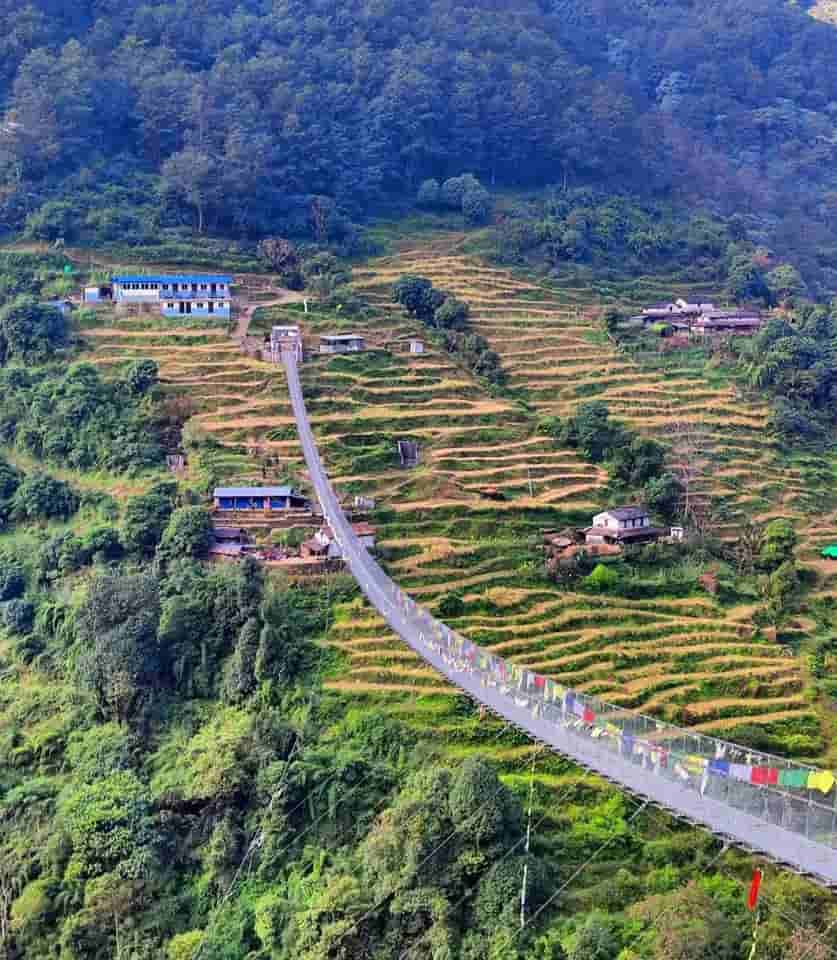
Experience the stunning views of Jhinu Danda, a serene Himalayan retreat blending natural beauty and tranquility.
Conclusion: Discover Tranquility and Tradition in Jhinu Danda
Jhinu Danda is a hidden treasure that every trekker should visit when exploring the Annapurna region. Nestled amidst the awe-inspiring landscapes of the Nepali Himalayas, Jhinu Danda offers a perfect blend of natural beauty and cultural richness. The village is renowned for its soothing hot springs, which provide a relaxing respite after long days of trekking. The surrounding scenery, with its majestic views of snow-capped peaks and lush greenery, creates a serene environment that helps rejuvenate both body and spirit.
Beyond its natural allure, Jhinu Danda is steeped in cultural heritage, offering visitors a chance to engage with the local Gurung people of Nepal. Here, you can witness traditional practices, enjoy vibrant festivals, and immerse yourself in the unique customs of the region. Whether you're soaking in the warm waters of the hot springs, hiking through picturesque trails, or simply soaking in the tranquil atmosphere, Jhinu Danda ensures a rewarding and memorable experience for all who venture to this captivating corner of Nepal.
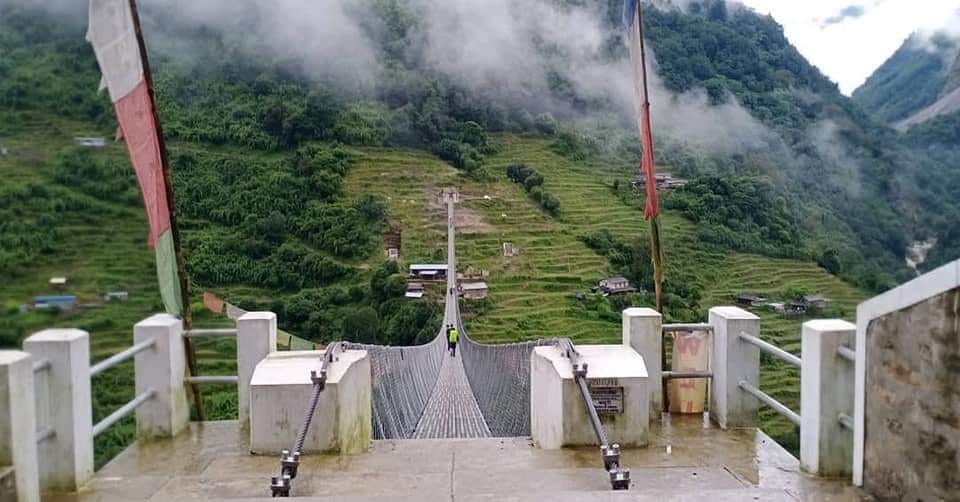
Discover the scenic beauty of Jhinu Danda, where nature's embrace offers breathtaking views and serene landscapes in the heart of the Himalayas.
FAQ : Visiting Jhinu Danda: Trails and Travel Tips
1. Where is Jhinu Danda located?
Jhinu Danda is located in the Annapurna region of Nepal, along the Annapurna Base Camp trekking route. It is situated at an elevation of 1,760 meters (5,774 feet) and offers picturesque views of the surrounding mountains and valleys.
2. Are there accommodations available in Jhinu Danda?
Yes, several lodges and guesthouses in Jhinodanda offer accommodations for trekkers. These lodgings provide basic amenities and a comfortable stay.
3. Can I visit Jhinu Danda if I’m not trekking to Annapurna Base Camp?
Yes, Jhinu Danda can be visited independently or as part of other treks in the Annapurna region. It is a great destination for those looking to explore the beauty of the Himalayas and enjoy the local hot springs and culture.
4. Is it possible to visit Jhinu Danda during the monsoon season?
While Jhinu Danda can be visited year-round, the hot springs are closed during the monsoon season (June and July) due to heavy rains. The trails can also be slippery, so trekking conditions might be challenging during this time.
5. What should I pack for a visit to Jhinu Danda?
When visiting Jhinu Danda, pack lightweight trekking gear, including sturdy hiking boots, rain gear, and warm clothing. Don’t forget essentials like a hat, sunscreen, and a water bottle. If you plan to use the hot springs, bring swimwear and a towel.
Popular Packages of Annapurna Region
Recent Blog Posts
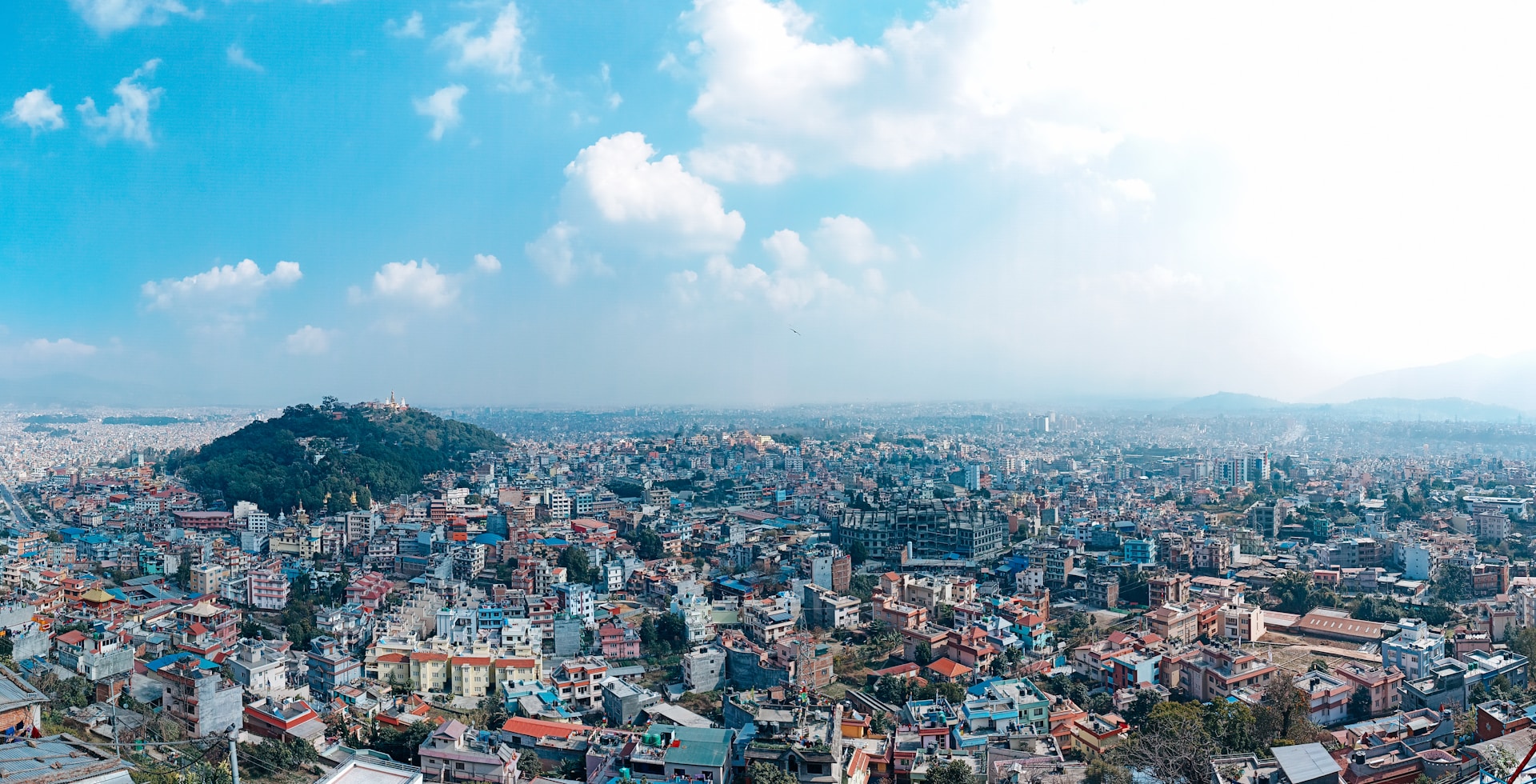
Kathmandu Valley: Exploring the Capital of Nepal
Jun 15, 2025
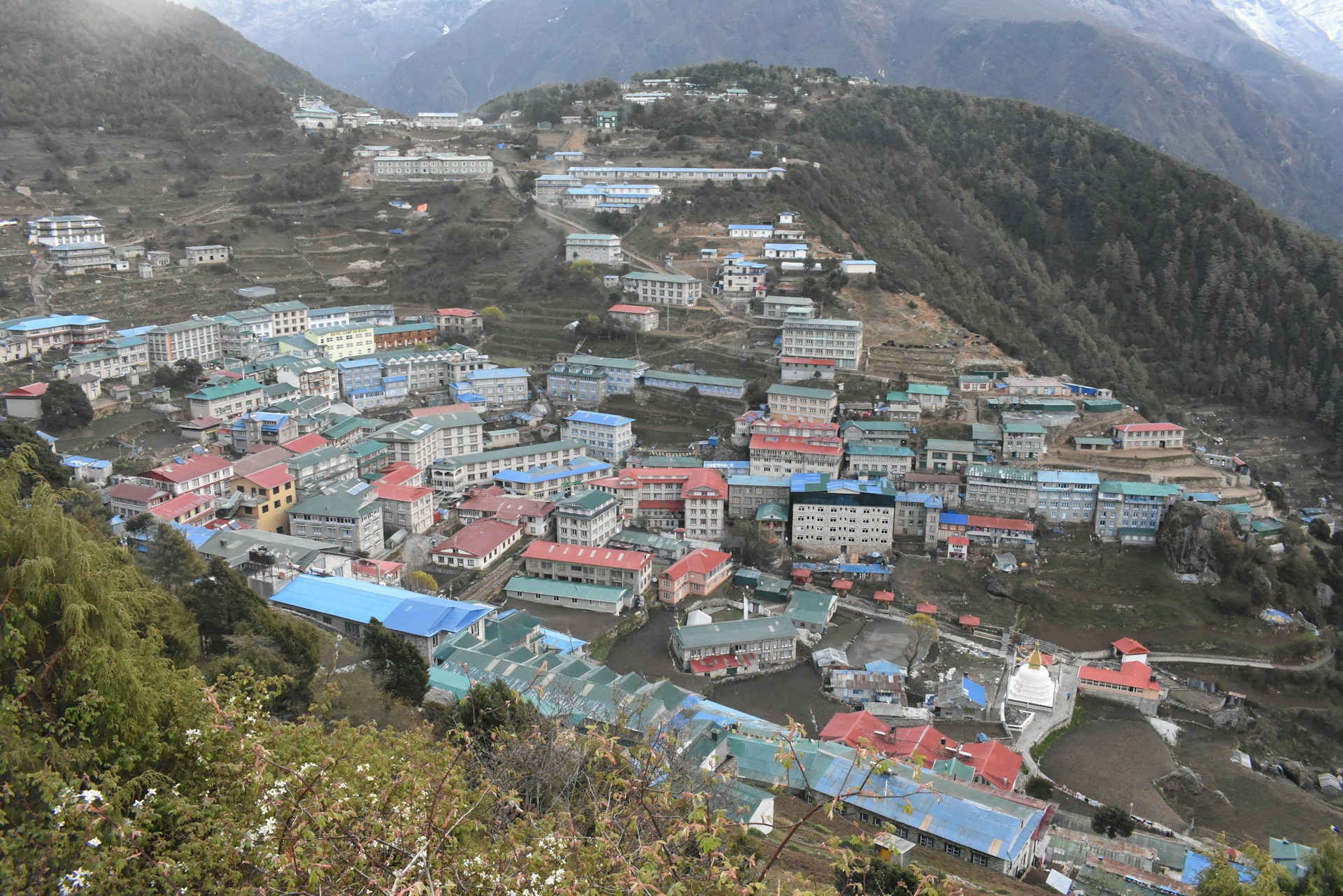
Namche Bazaar: What to Expect in the Sherpa Capital
May 20, 2025
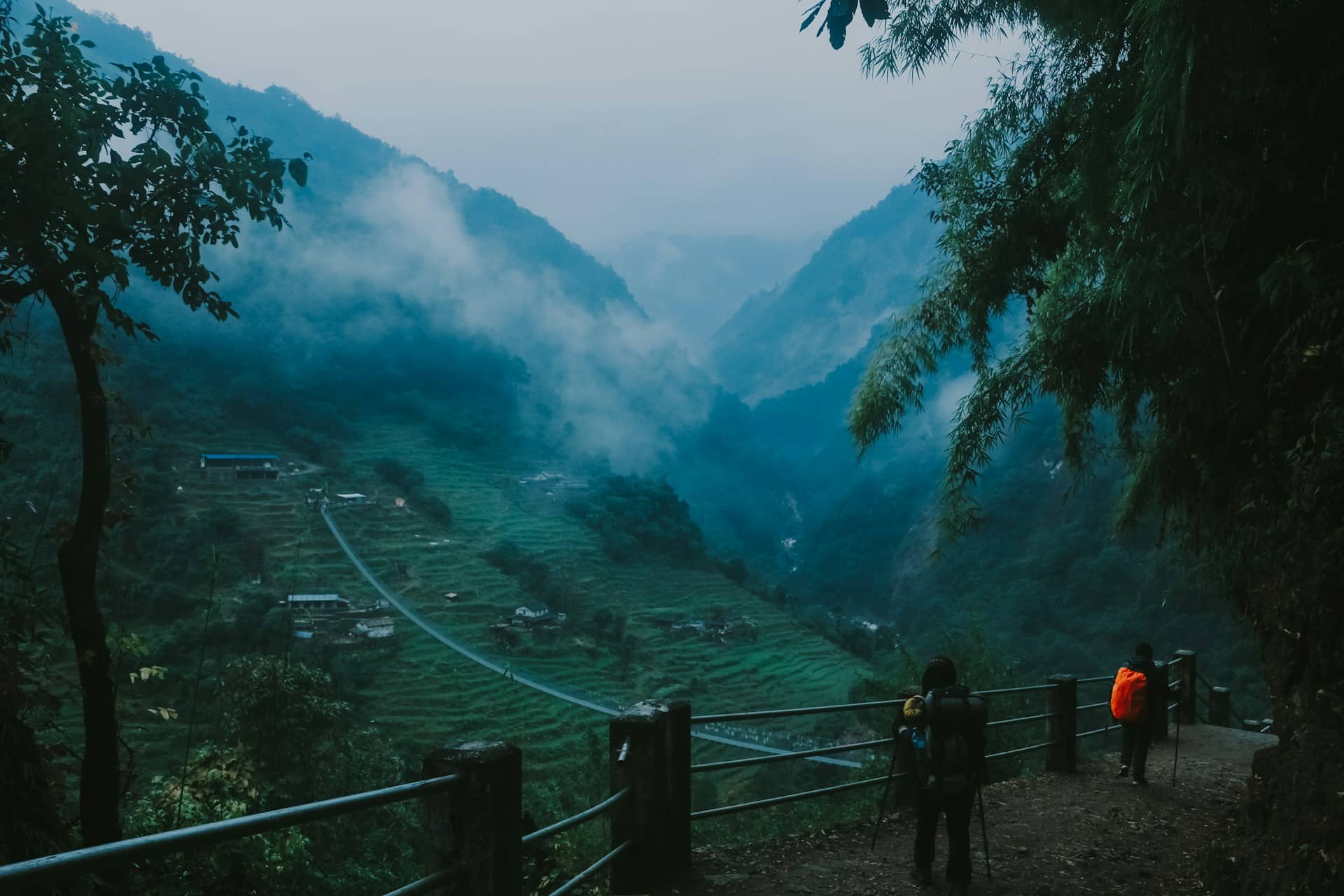
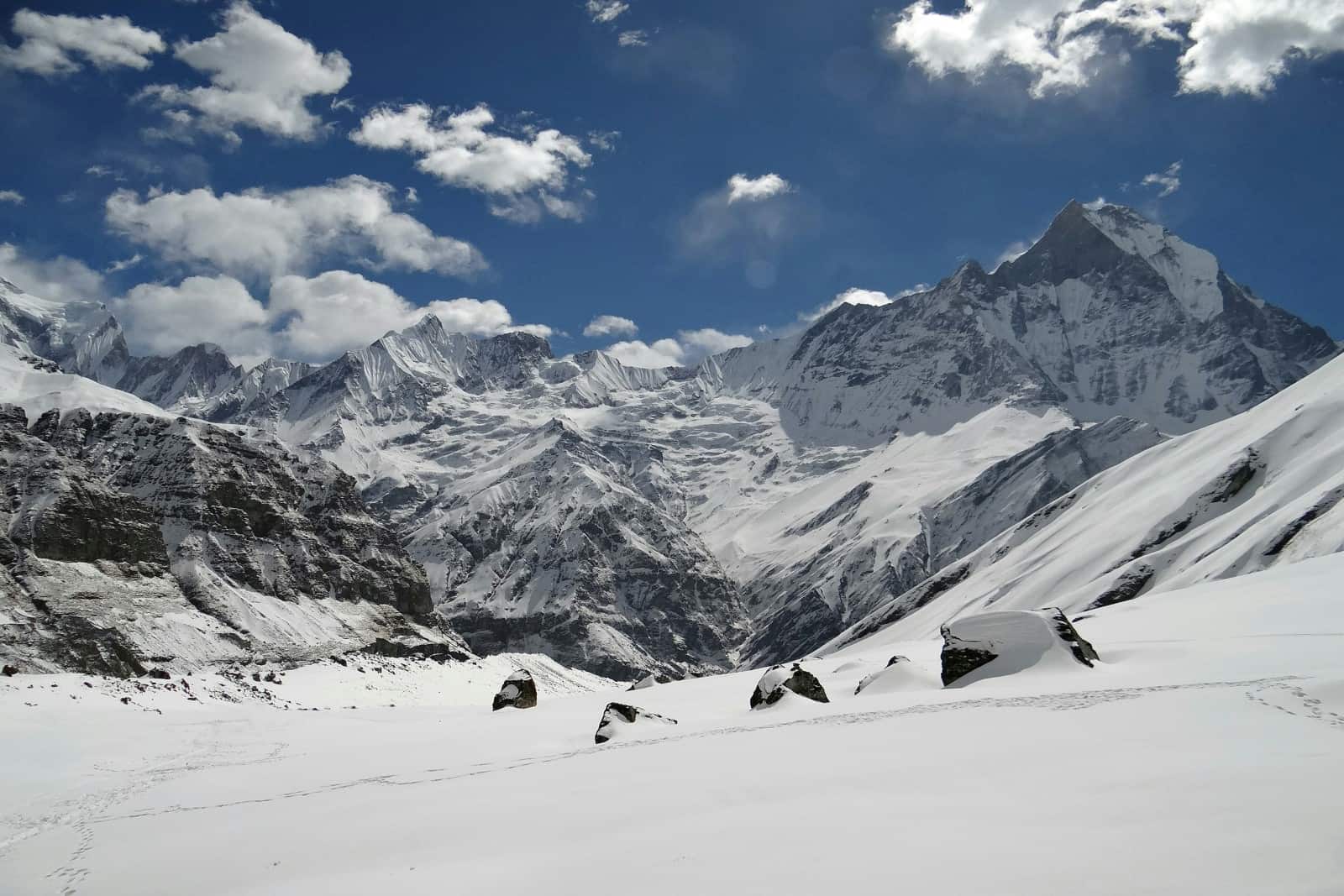

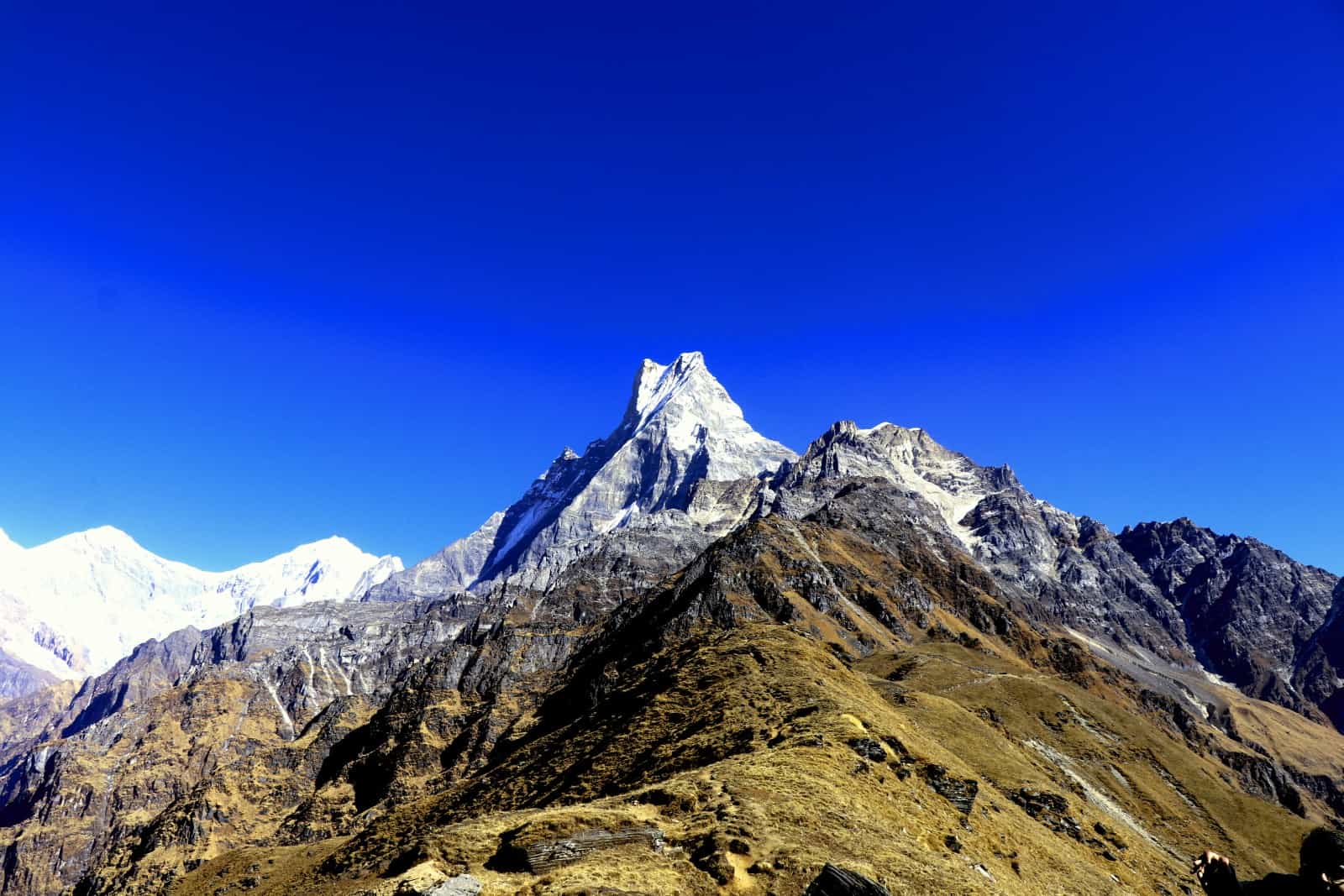
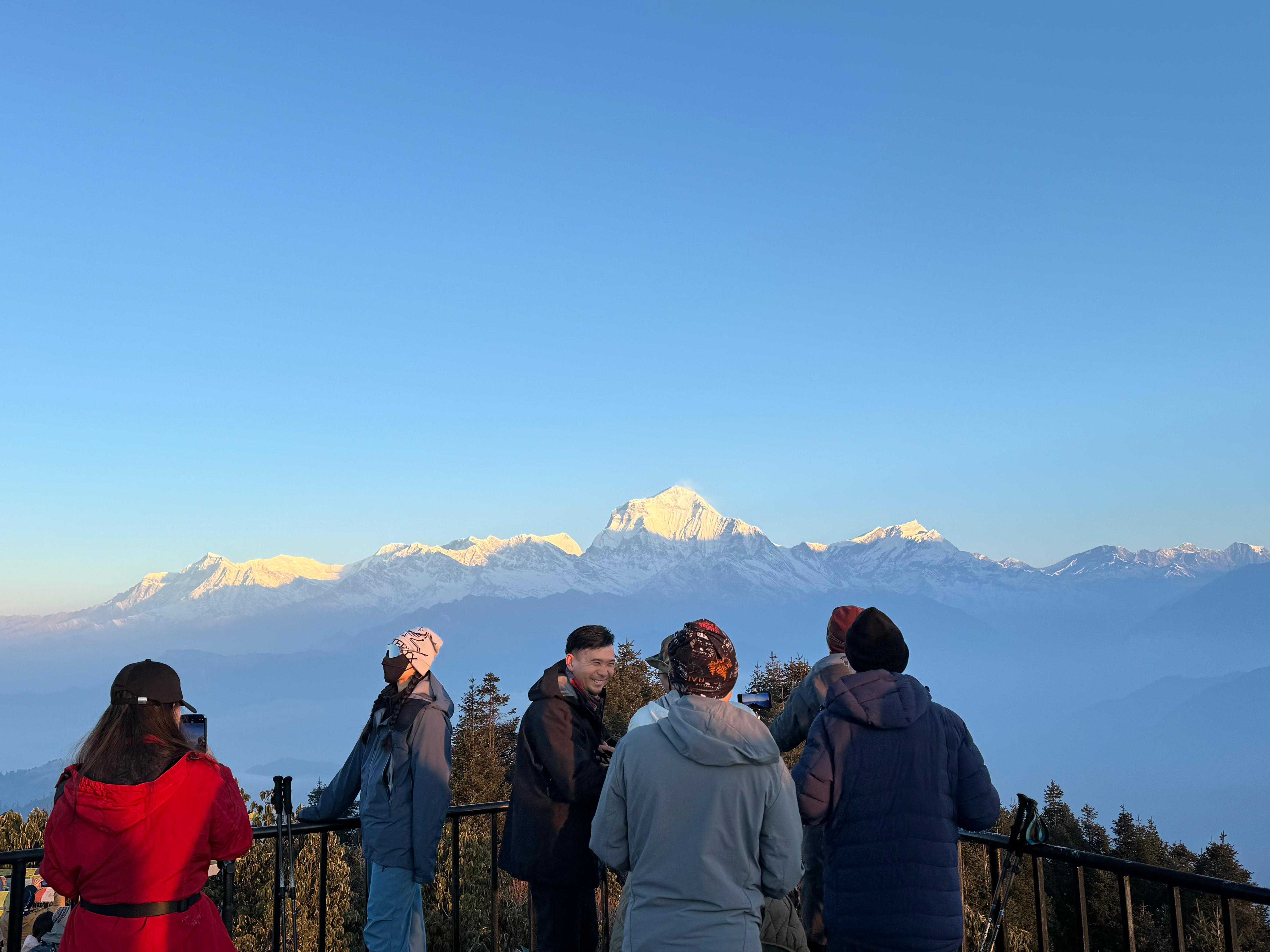
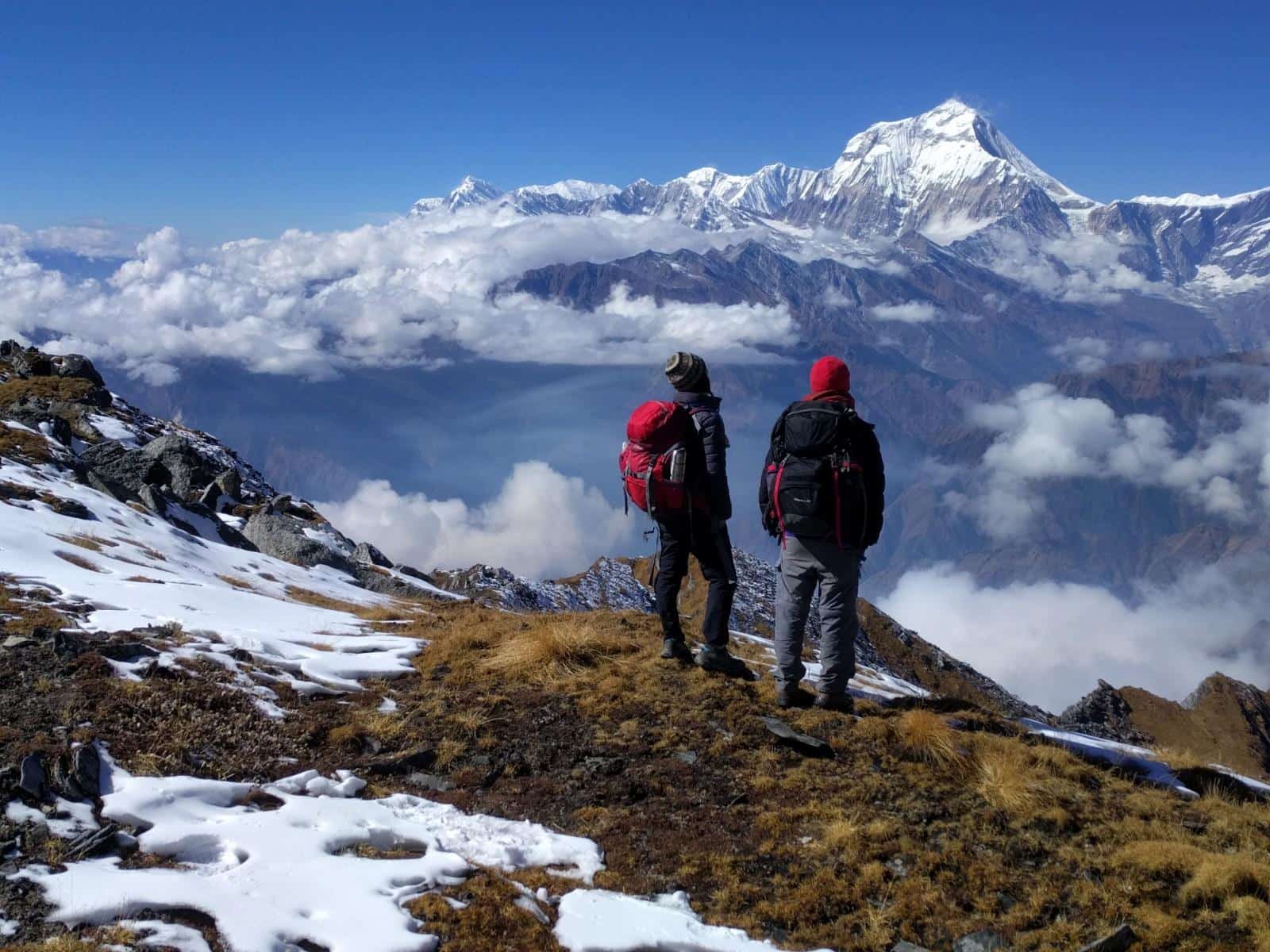
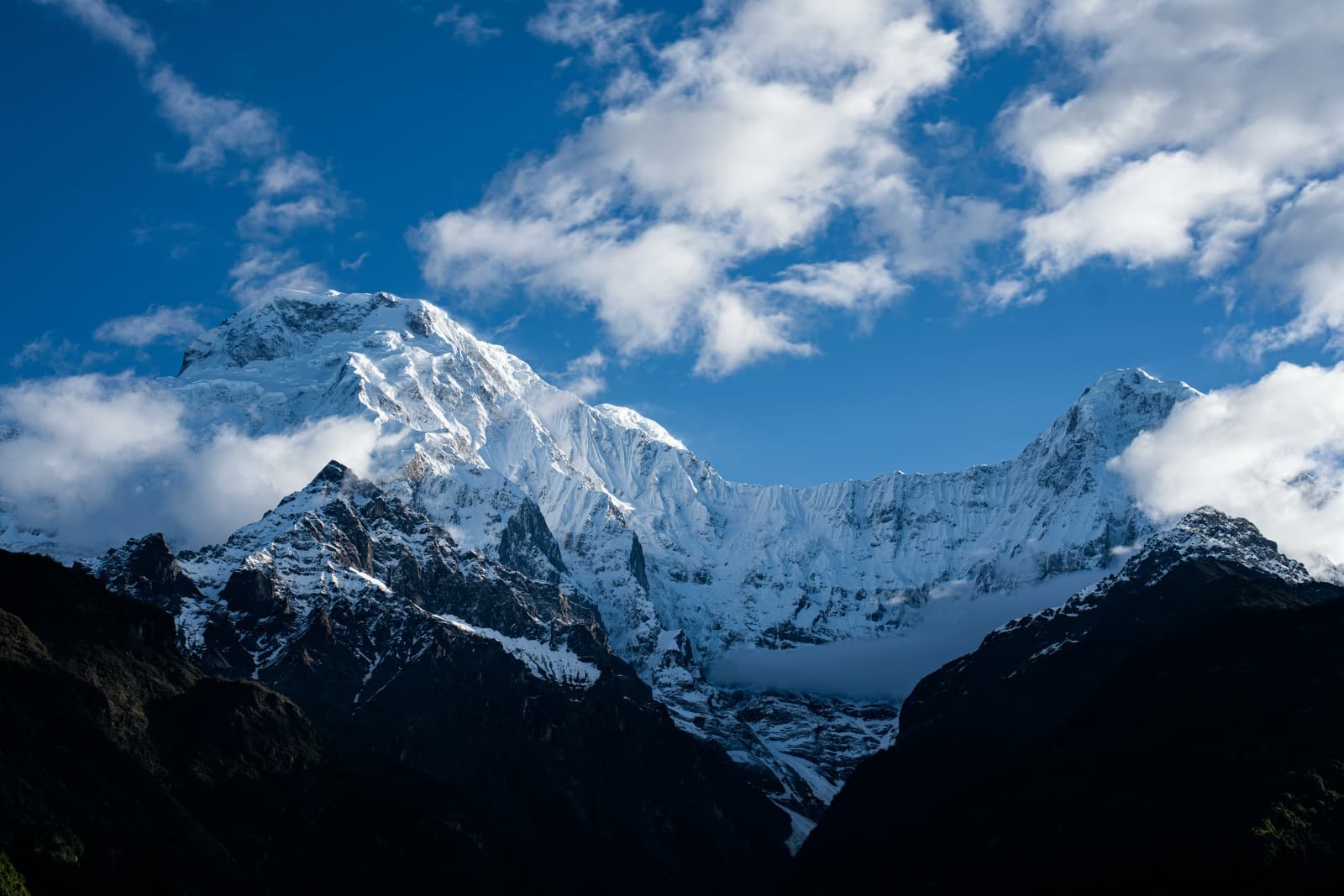
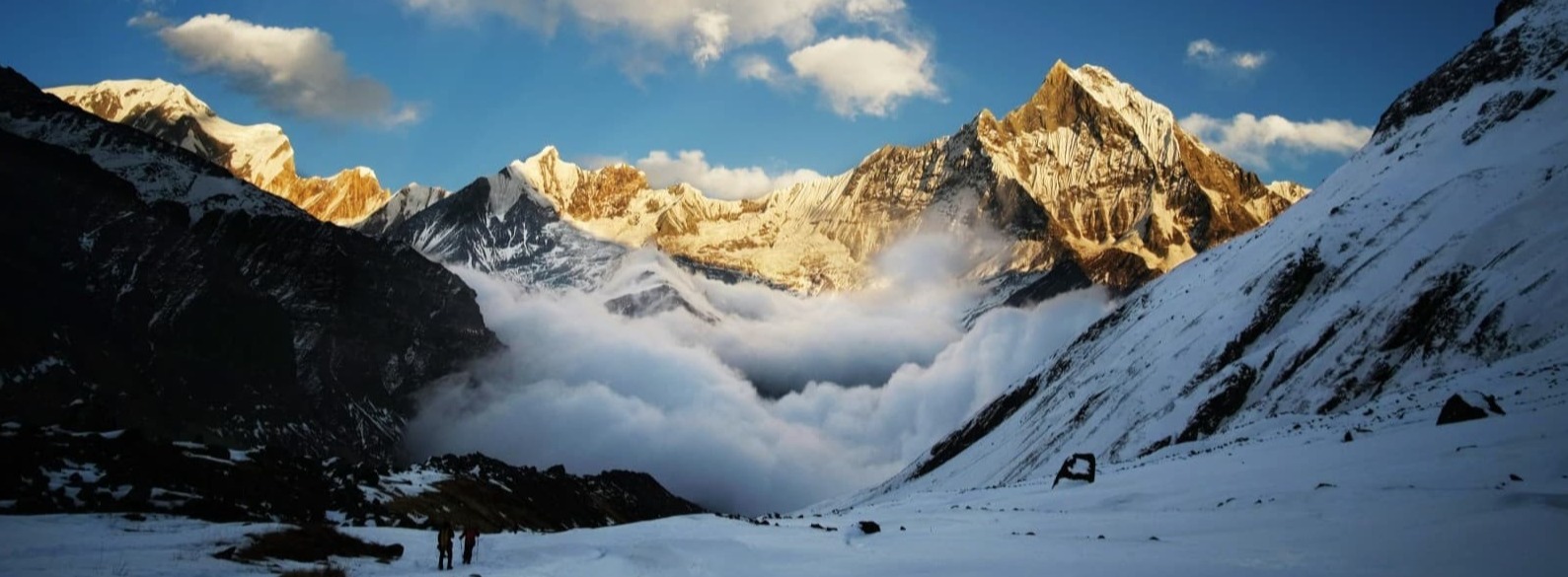
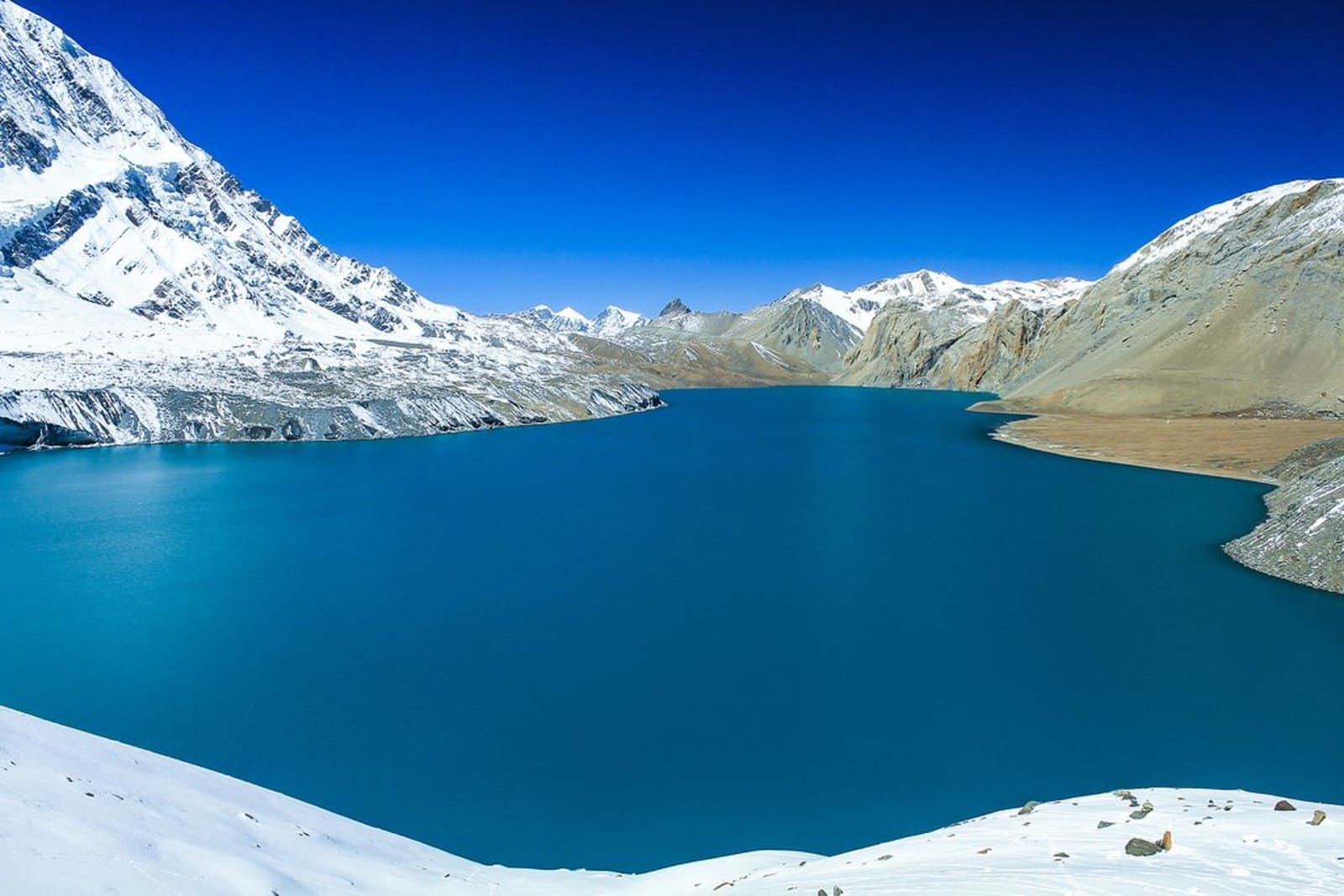
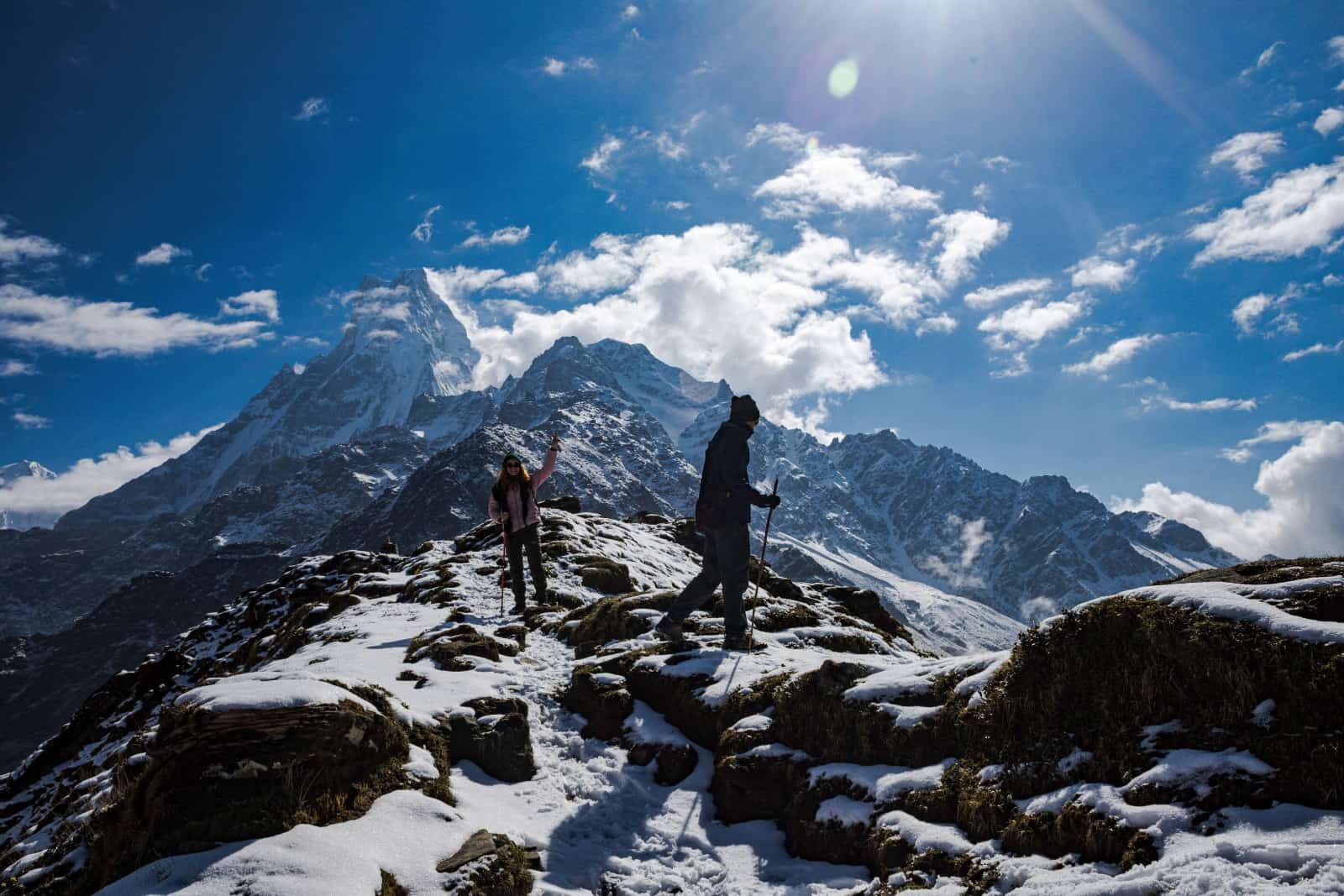
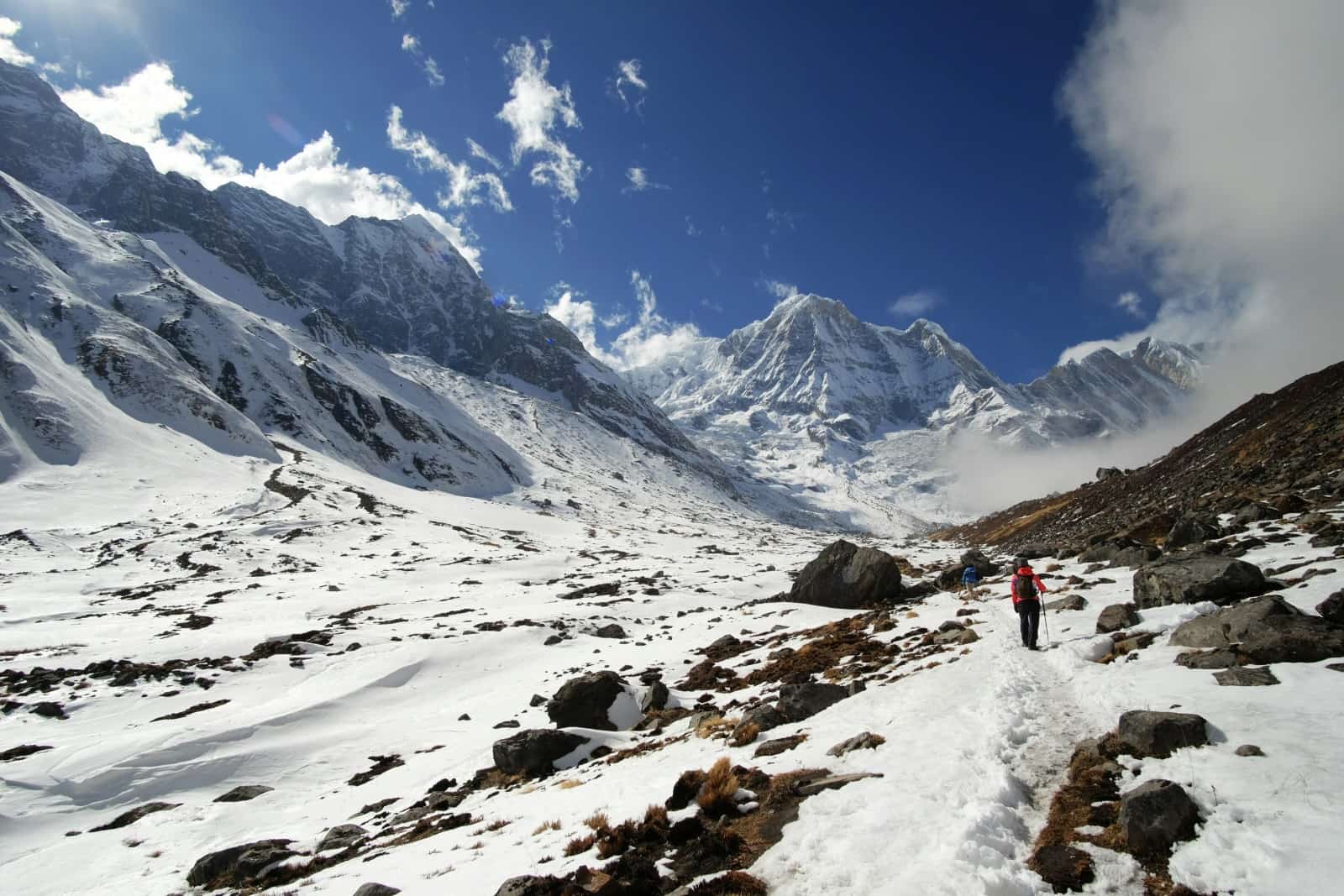
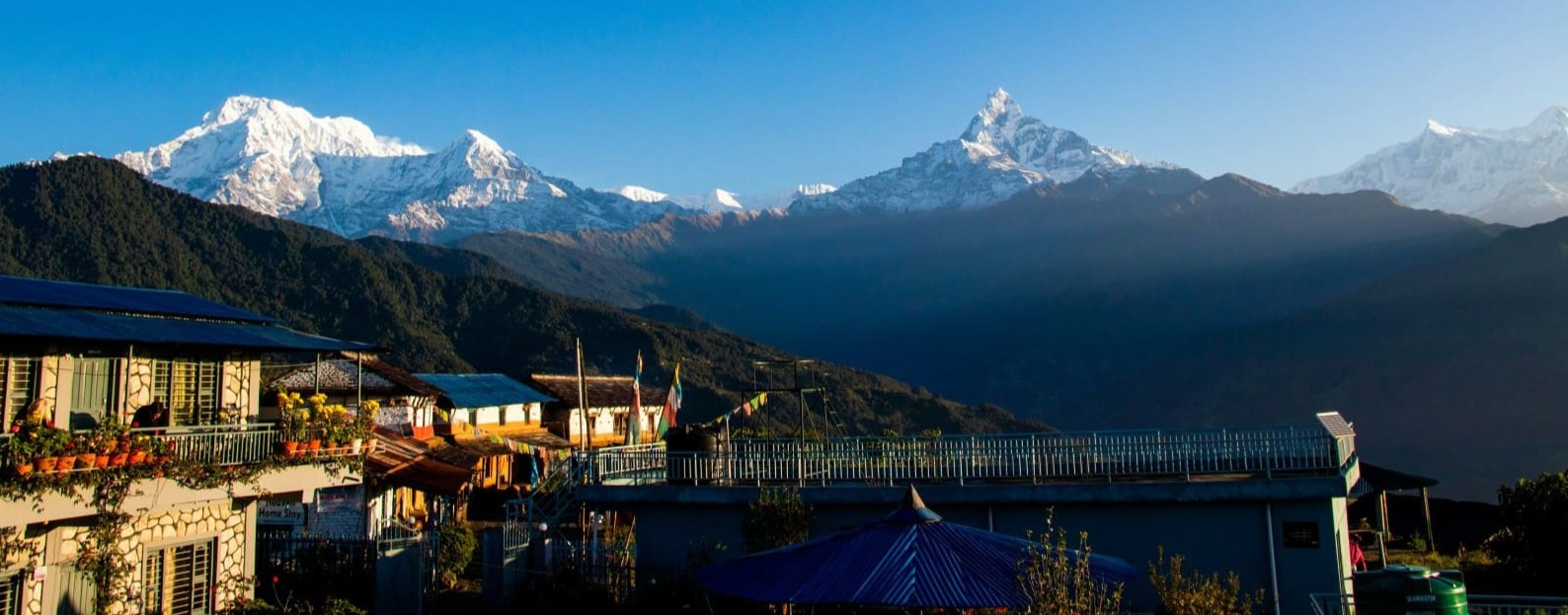
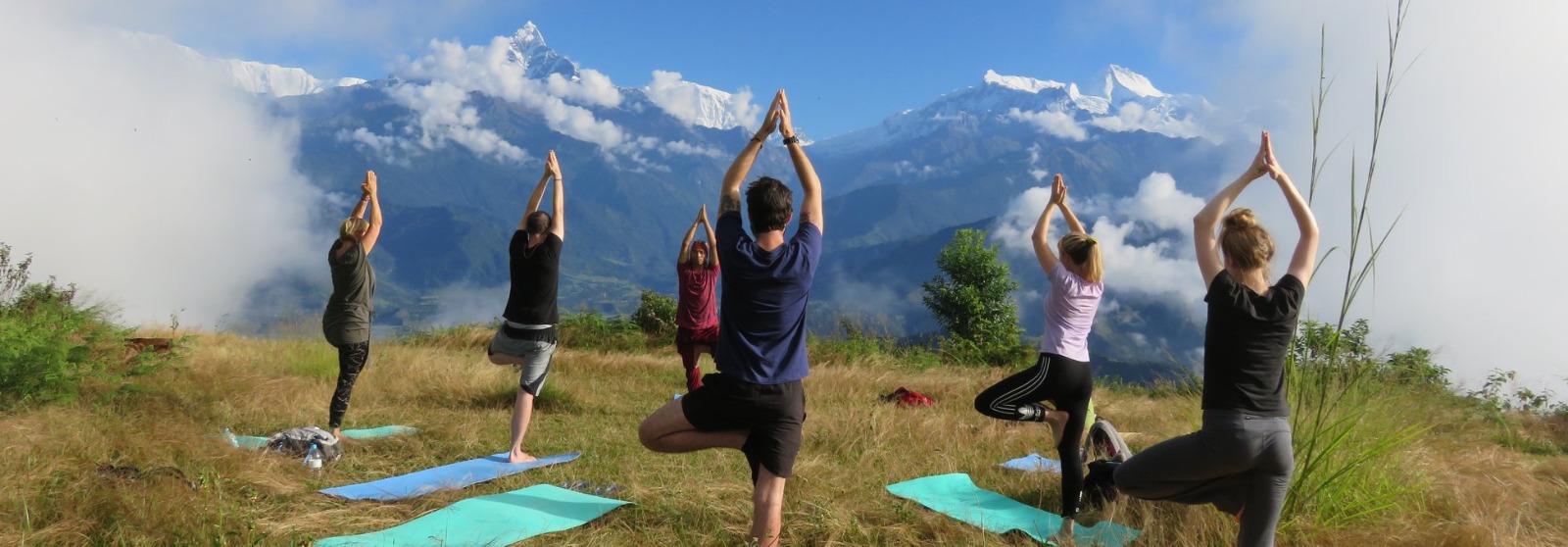
.jpg)
